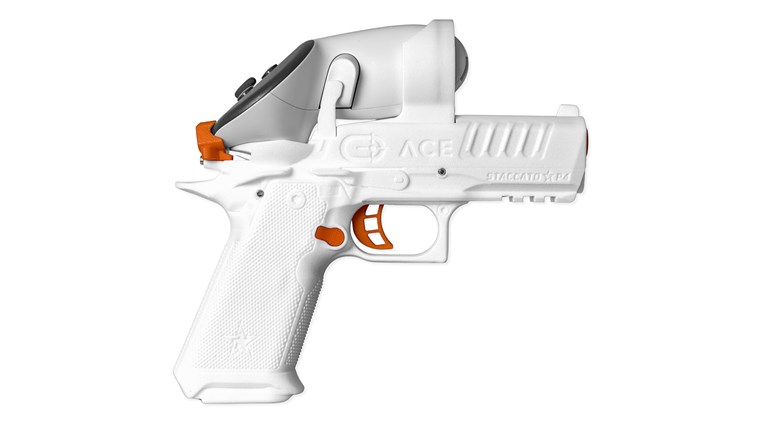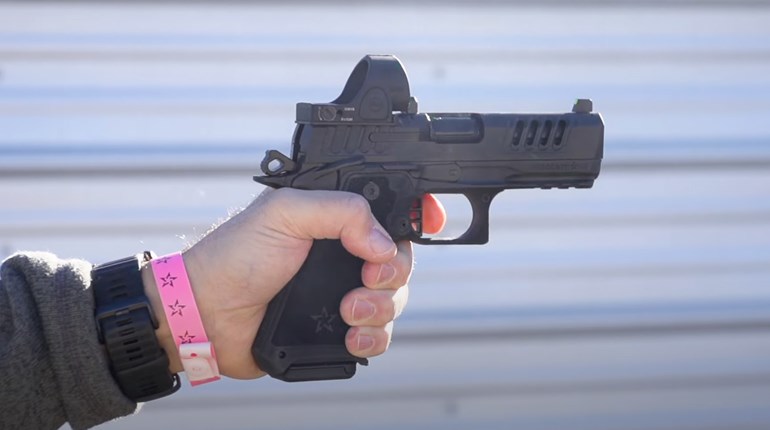
Memorial Day weekend found me somewhere in southern Wyoming, attending a long-range, precision-rifle clinic hosted by NRA Outdoors. This was something new—being a pistolero at heart and a lifelong devotee of the concealed handgun (with a modest acquaintance with the scattergun for home protection), I wondered how applicable learning to shoot at long distance might be (actually, I was terrified I was going to be “that guy” more than anything). As it turned out, I was surprised to find a substantial number of lessons translated well into the defensive realm.

A Comfortable Position is an Accurate Position
One of the fundamentals made clear at the course was the importance of a stable platform from which to shoot. At first blush, it seems so intuitive as to be innate; you simply cannot shoot well if you are not solidly planted. Getting into it, though, one begins to realize there is a wide variety of what passes for “stable” out in the real world. It’s one thing to set up a rifle on a benchrest with a bipod and sandbag rests (or even a sled-type rest). However, it gets harder when the position changes to prone—as may be needed when engaging a target on an open field—and is even further complicated when taking a shot while seated or standing.
Driven home over the two-day course was the notion you should bring the firearm to you, as opposed to bringing yourself to the gun. When contemplating shots at long-range, you should expect to take a fair amount of time ensuring all aspects are accounted for, such as wind, distance and target size. If your rifle is not properly aligned and you find yourself forced into an uncomfortable position, every second you spend contorted will affect your ability to make a difficult shot. Whenever possible, bring the firearm to your eye, rather than bringing your eye to it.
That sounds familiar, doesn’t it? It sure reminds me of the proper sight picture on a handgun. While the two disciplines couldn’t be further apart, the fundamentals are exactly the same—don’t contort your body to achieve proper sight picture, adjust your firearm to perfect it. Rather than presenting from low-ready into your shooting stance and then bobbing your head around to find the sights, align to your line-of-sight by moving the handgun. While experienced shooters can find their natural point-of-aim instinctively, for those of us still working on our form it’s important to remember moving the firearm is easier than moving the body.
Make the Most of Your Environment
The Long Range Shooting Clinic is geared toward hunters who will be chasing game in areas with varying distances out to 1,000 yards or farther (obviously not the Eastern seaboard, but many western states offer hunting opportunities where 300 yards is a close shot). This entails having gear that is lightweight and easily portable—no shooting benches or heavy sandbags—as the shooter may be carrying this stuff for quite some distance. I found my greatest success came when I was able to firmly anchor my body and rifle; at times this meant moving a couple big rocks to make an improvised seat. Ringing an 18-inch steel plate at 775 yards on a slight incline was worth acting as a human forklift.
In a comparable manner for the defensive shooter, we should incorporate movement into our training whenever possible, endeavoring to make the most of cover and concealment and using our surroundings, because it’s the best way to use our environment in a dynamic incident. Keeping an eye on our surroundings—whether looking for a sturdy rock to rest a rifle for a long shot or a doorway through which to duck when things go pear-shaped—is a skill we should all strive to hone.

Slow Down, you Move too Fast
When trying to make a long-range shot, especially minute-of-angle or less, it is imperative not to rush things. Every piece of the shot is critical, from setting up the rifle and scope, to finding the right position, all the way down to the shooter’s breathing and heart rate. The slightest disturbance at the trigger can result in a miss. There’s a balance to be struck, of course; one does not always have an overabundance of time to set up the perfect shot.
What was stressed at the Long Range Shooting Clinic was to do everything possible before going out in the field to minimize the factors that would require correction under stress. Make sure the rifle is operating at peak efficiency. Zero the scope at a known distance and know how to determine bullet drop, trajectory and power at varying distances. Bring sufficient, tested ammunition so the only variables in the field will be environmental and the size and distance of the target. Getting the shot right when all conditions are perfect is hard enough—trying to achieve a long-range hit when faced with a dozen tasks all requiring peak mental acuity is much more difficult.
There’s an analogous expression in the self-defense arena: “Slow is smooth, smooth is fast.” Taking the time to work through the mechanics of presentation slowly and making certain to get all components correct will result in increasingly faster overall time as repetition and muscle memory build up. Work on getting the fundamentals correct first, and speed up the pace second. There’s another expression at work here, conveyed in the modern Western “Wyatt Earp”: “Fast is fine, but accuracy is final.” Being faster than the person intending you harm doesn’t help if you can’t make solid hits.
While it’s doubtful you’ll ever need to take a defensive shot measured in hundreds of yards, skills perfected at long distance will help at close range, too. Fundamentals like keeping your defensive sidearm in top working form and ensuring flawless function with purpose-built ammunition are key regardless of distance.
Acquire purpose-built, high-quality gear—such as belts, holsters and spare magazines—and make sure everything works for you and your needs. Practice your presentation so it becomes second nature, and keep practicing. Reduce the number of unknowns in your daily routine to the smallest number possible, then, if you ever need to call upon those skills, you will be ready without distraction.
Get Training
Participants in the Long Range Shooting Clinic are typically big-game hunters and long-range enthusiasts, but they are united by a common goal: They all want to improve their long-range-shooting capabilities, and they are looking to experts in the field to accomplish that objective. Instructors for the course are experienced back-country guides and skilled long-range marksmen, who impart their decades of experience in shooting at distance with ease and in an easy-to-understand way. One common refrain from the group centered on the confidence they found after receiving this instruction. Some had never taken a shot beyond 100 yards, yet after NRA Outdoors training, stated they would feel confident in shooting out to 500 or 600 yards.
It is very similar in the defensive-shooting world. Whether one is a serious competitor, a 3-gun neophyte or simply an average shooter looking to pick up defensive skills, receiving training from accomplished instructors can only be a good thing. The confidence built when serious instruction is received from qualified experts translates into better, more-accurate shooting, whether your goal is to learn how to shoot accurately at long distance or get more shots on target quickly in defensive scenarios. Actively seek good training whenever possible and practical. Like ammunition, you can never have too much.
Whether you want to hone your skills for the hunt of a lifetime or prepare for the worst-case scenario, instruction is available. For long-range shooters, the Long Range Shooting Clinic sponsored by NRA Outdoors is a top-tier place to learn how to shoot accurately at significant distance. It’s also a great place to learn about what you need as a shooter of any stripe to perform at peak efficiency.


































